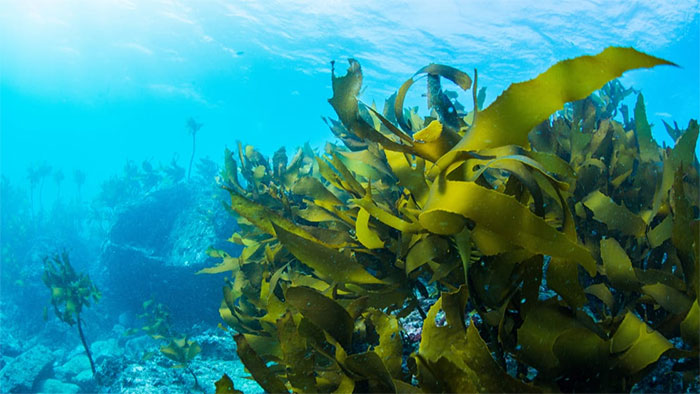How do marine animals drink filtered water?
How do marine creatures get filtered water to sustain life when all around is salt water? The answer will surprise you about the wonderful creation of nature!
On Earth, oceans account for 97.2% of water resources, icebergs and glaciers account for 2.15%, groundwater accounts for 0.31%, and lakes account for 0.009%; the atmosphere (water vapor) accounts for 0.001%, while rivers and streams account for only 0.0001%. Of these, only fresh water in groundwater, lakes, rivers and streams is used by terrestrial animals and plants, meaning that the amount of water that the Earth can provide for terrestrial life accounts for less than 1% of the total water. So how do marine life survive?
The formation and evolution of life is very delicate. Since marine organisms cannot directly use seawater , in order to adapt to their living environment, marine organisms will undergo a series of continuous evolutionary processes to solve the problem of high seawater concentration and help them survive in this harsh environment. Different marine organisms adopt different strategies.
Common plants in marine life include seaweed , which is able to adapt to the high salt concentration of seawater, can obtain water and inorganic salts from seawater, use CO2 dissolved in water, and synthesize necessary organic substances through its own chlorophyll and through sunlight to create the organic substances necessary for survival.

Seaweed.
For marine fish , in order to survive, they have evolved organs with unique filtering functions. Marine fish use chlorine-secreting cells in their gills to filter seawater. Chlorine-secreting cells are like a microprocessor factory in the gills, which on the one hand is responsible for analyzing the amount of salt in the water body, on the other hand is responsible for retaining qualified water. In addition, some fish will carry out secondary purification in their bodies, using their own cells, livers and other organs to regulate and reduce excess salt in the body. Internal organs can filter a small amount of seawater, just enough to meet the body's needs. The internal structure of most fish is of the "rectal" type, and impure water is discharged directly through the anus.

Marine fish have evolved organs with unique filtering functions.
Whales are marine mammals. They can swallow seawater directly and then filter the water through their special kidneys. Their intestines and stomachs have a special thick layer of mucosa that can not only filter seawater but also prevent the intestines from being scratched by eating sharp objects. After many layers of screening and digestion, qualified substances will be absorbed and used, and unqualified substances will be excreted, so that the giant whales can live freely in the ocean.
When sharks excrete, they do not excrete urine out of their bodies but rather accumulate it under their skin.

Shark.
As the shark draws in seawater through its body surface, salt cannot penetrate due to the osmotic pressure difference that forms between the urea in the cortex and the seawater inside the shark. The composition of the cortex and urea acts like a natural water filter, allowing the shark to replenish water at all times.
Turtles also have a unique way of purification. When seawater enters their bodies, the salt in them is removed by a special cell filtration process, accumulates near the tear glands, dissolves in tears and is excreted.
The way seabirds clean seawater is similar to sea turtles, they excrete substances containing salt crystals through their nostrils.
Survival of the fittest and the evolution of biological diversity over millions of years have created the Earth's current ecological environment.
- Filtered water for long periods of time
- What happens if you drink filtered water instead of fresh water for 1 month?
- Effect of preventing 9 unexpected diseases of filtered water
- Children under 6 months old should not drink plenty of water
- Can we survive, if we only eat bread and drink filtered water?
- 6 times of drinking water is even more poisonous than medicine
- Mysterious decoding of people who do not eat or drink throughout life
- Why do wild animals drink water from dirty ponds and lakes without getting sick?
- Harms of arbitrary drinking habits
- How to go to the toilet?
- Medicines from marine animals
- The warning signs you drink not enough water
 Surprised: Fish that live in the dark ocean still see colors
Surprised: Fish that live in the dark ocean still see colors Japan suddenly caught the creature that caused the earthquake in the legend
Japan suddenly caught the creature that caused the earthquake in the legend A series of gray whale carcasses washed ashore on California's coast
A series of gray whale carcasses washed ashore on California's coast Compare the size of shark species in the world
Compare the size of shark species in the world Discover the secret of the water buffalo
Discover the secret of the water buffalo  Shocking discovery about the Earth's 'tail'
Shocking discovery about the Earth's 'tail'  Top 10 Unbelievable Ways Animals Survive in Dangerous Environments
Top 10 Unbelievable Ways Animals Survive in Dangerous Environments  Mysterious wonders of the world
Mysterious wonders of the world  The largest animals that lived in the desert, still exist today
The largest animals that lived in the desert, still exist today  Why can submarines dive and surface?
Why can submarines dive and surface? 